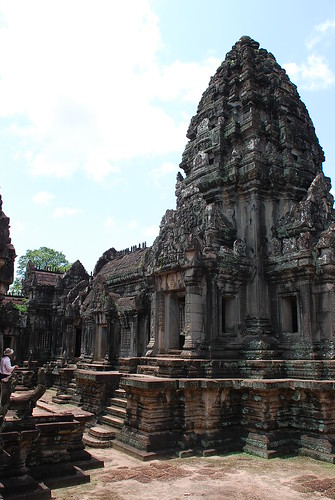
Although Angkor Thom and Angkor Wat are the most famous of the monuments, if you are really going to see everything you will need to have a driver and a guide. We hired Mr. Ou Niv Vith (Tel: (855) 12 97 26 11) to take us around. His English is excellent--he used to be a school teacher, but by taking the test to become a guide he could make more money. It is still highly recommended that you do your research ahead of time--it will make it much more interesting and, not entirely unsurprisingly, the latest research is not always in the hands of the local guides.
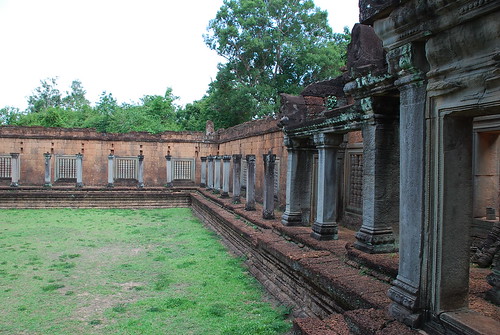
Much of the temples near Siem Reap remain covered by jungle--some are still inaccessible due to mines left over from the Cambodian civil war and, later, their war with Vietnam. In the coming decade, who knows what more will be revealed?
Banteay Samre, shown above, is not so hidden in the jungle, but is off the beaten track--though not so much so that there weren't people there catering to the tourists. Still, it is deinitely one of the less well-known beauties of Angkor Wat.

And the beauty isn't just in the temples. This rainbow showed itself--we saw it 360 degrees around the sun, apparently filtered through the moisture in the atmosphere. I'd heard of pilots seeing this kind of phenomenon, but was taken aback when we saw it here. Fortunately, one of the buildings at Banteay Srei helped to block out the sun so that we could take this picture.
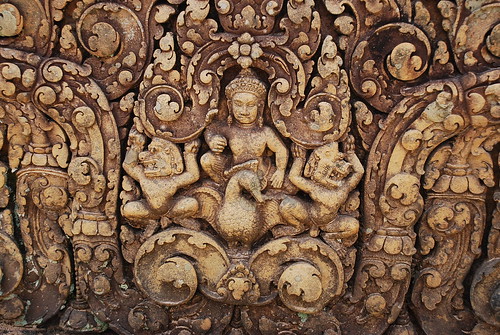
The temple itself was carved with myriad delicate carvings, in a distinctive red sandstone that really brought out the light and shadow of the haut relief carvings throughout. That they have survived since the 8th or 9th centuries is absolutely incredible.

Nearby Banteay Srei is a less decorative but no less impressive monument--Preah Rup. Built as a funerary temple for the king and the royal family, it still stands today--the black smoke of ancient royal cremations can still be seen on inside of the two crematoriums.
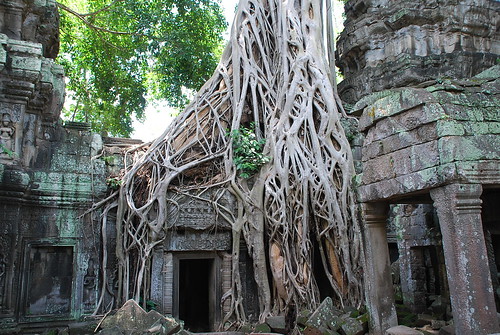
For your truly 'jungle' temples, you really can't beat Ta Prom. It was actually used as a set for "Tomb Raider", and is one of the most distinctive temples with the trees having overgrown so many of the walls. Although the trees are continuing their slow process of tearing down the temple, conservation work is very careful of the fact that today the trees are as much a part of the heritage of this site as anything else.
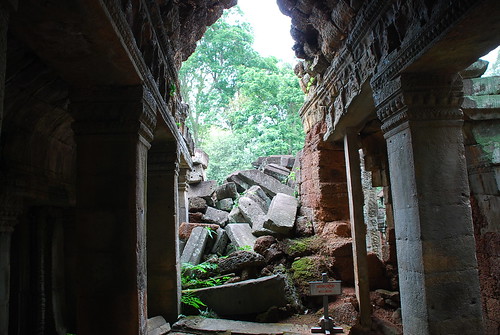
The ruined temple of Preah Khan is also secreted within the jungle. It is actually the yang to the yin of Ta Prom, having been built for the king's father, while Ta Prom was built for his mother. The dilapidated ruins still give voice to the king's filial piety, for as you approach the center where his father's coffin was placed, the doorways grow smaller and smaller, until you are forced to bow before him, no matter how noble you may be.

But for all the searching around in the woods, we still come back to Angkor Wat as the most impressive single religious complex in the area.
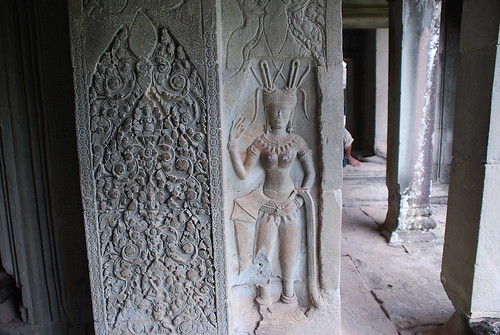
Inside, the complex is just as impressive, with carvings around the lower galleries showing famous stories, including the story of Ramayana and the Churning of the Sea of Milk.

The towers of Angkor Wat are perhaps the most famous view, however. It is used on the Cambodian flag, and has been so since the mid 19th century. Oddly, for all of its stature, we know very little of why the temple was built--and why it differs from so many other temples, facing west, towards the setting sun, rather than east, towards the rising sun.
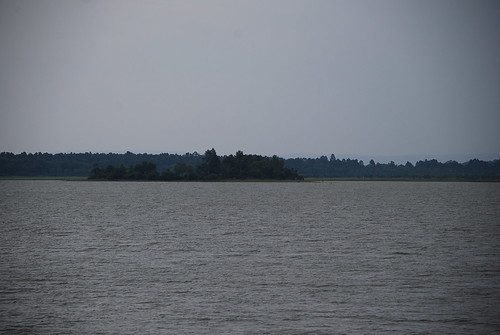
The most important structure in Angkor, however, contains the least decoration. The west baray was the largest of several man-made reservoirs that supplied water to the city and the fields. It was their ability to tame the waters in these large reservoirs that gave the early Khmer the ability to grow three crops of rice a year and thus support their flourishing civilization. Unfortunately, much of the canals and aqueducts have been lost to the jungles, and people are only now figure out how to recreate them and hopefully reinvigorate the agriculture in and around Siem Reap.
To be continued...